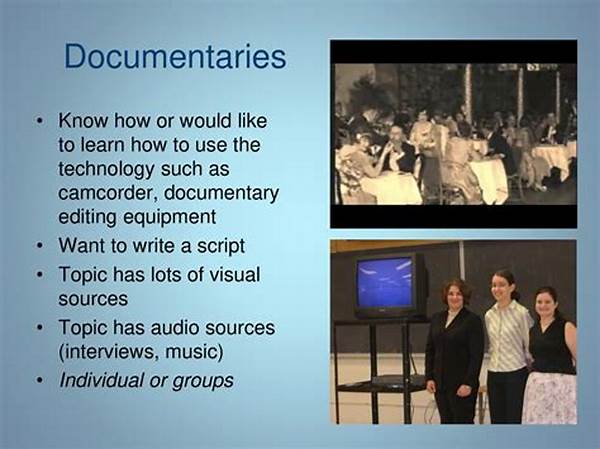Imagine diving into the depths of history, not just through the stories passed down over generations or the words printed on pages, but through the dynamic sights and sounds of the past. This unconventional adventure awaits documentary enthusiasts and creators alike, offering a gateway to authenticity that begs to be explored. Enter the realm of audio visual history sources, a treasure trove for filmmakers seeking to evoke genuine connections and emotional resonance with their audience. Think of it as the Netflix of history—educational, captivating, and a little addictive.
Read More : Portable Audiovisual Solutions For Outdoor Product Promotions
The allure of documentaries lies in their ability to engage, educate, and entertain. Adding audio visual history sources into the mix transforms these factual narratives into rich tapestries of lived experiences, making history learned in classrooms come alive in brilliant color and sound. Such materials are not merely supportive elements; they are the stars of the show, offering viewers a front-row seat in the theater of the past. So, gear up as we delve into the magic of authentic storytelling, made possible by these valuable resources.
Unveiling the Power of Audio Visual Resources
Unlocking the potential of audio visual history sources is like discovering a forgotten time capsule, brimming with moments waiting to be relived. Documentaries thrive on authentic storytelling, and nothing says real quite like firsthand sources. With technology enabling easy access to archives, filmmakers are now more equipped than ever to weave these resources into their narratives, engaging audiences at a profound level.
The Emotional Pull of Authenticity
The use of audio visual history sources in documentaries serves as a bridge between the audience and the reality of past events. Whether it’s the eerie silence in a piece of old footage or the bustling noise of a bygone era captured on tape, such sources create an emotional texture that mere narration struggles to match. This authenticity fosters trust and empathy, significant in marketing any documentary as a must-watch for both avid historians and casual viewers.
Beyond the Basics: Crafting More Compelling Stories
Relying on audio-visual history enriches documentaries more than just adding visual appeal. These sources shape nuanced narratives by offering fresh perspectives. Consider a silent film from the early 20th century—its absence of spoken word compels viewers to focus intently, picking up on the subtle cues in body language and setting. This might elicit laughter, nostalgia, or a poignant sense of loss, molding an emotional landscape that draws viewers further in.
Delving Deeper: How Audio Visual Sources Enrich Authenticity
Documentaries stand out when they can offer audiences not just stories but experiences. Incorporating audio visual history sources enriches documentaries with authenticity and deepens understanding in a format that’s engaging to the core. What are the elements that make these resources invaluable to filmmakers?
Transforming Documentaries with These Treasures
The effective use of these sources requires a good storytelling instinct. Editing plays a crucial role—deciding which clips to highlight, what sequences to portray, and how to synchronize them with narrative techniques. A fine balance between old and new footage can maintain authenticity while ensuring the audience remains engaged without feeling like they’ve stumbled across outdated media.
Read More : Benefits Of Audiovisual Sources In Historical Research With Tv News Archives
Crafting an Impactful Narrative
In a digital age overflowing with information, documentaries need to stand out to command attention effectively. They need more than just compelling ideas; they need the richness audio visual history sources provide to be truly engaging.
The Lasting Impact of Authentic Documentaries
In conclusion, the inclusion of audio visual history sources enriches documentaries by providing a depth and authenticity otherwise hard to achieve. These elements make history tangible and lessons unforgettable, opening viewers’ hearts and minds to worlds they can touch through sight and sound.
Filmmakers have a unique opportunity—not just to tell stories but to transport their audiences into different times and places, making history a shared journey rather than a distant narrative. As documentaries continue to evolve, the use of these vibrant sources will only grow more crucial, fostering a deeper appreciation for the past and its lessons, and allowing stories to resonate long after the credits roll.
